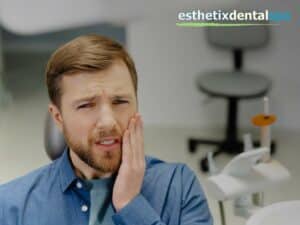Common Signs That Suggest a Need for Tooth Extraction
Understanding the signs and symptoms that indicate the need for tooth extraction is crucial for maintaining oral health. In this article, we’ll delve into the telltale signs that may lead you to seek the expertise of a dental professional at a trusted dental clinic.
Your teeth are vital not only for a beautiful smile but also for essential functions like chewing and speaking. Therefore, it’s crucial to be aware of the red flags that could suggest a tooth extraction is on the horizon.
From persistent pain to overcrowding issues, this comprehensive guide will help you recognize when it’s time to consult a dental professional for evaluation and potential treatment.
Let’s dive into the world of dental health and discover the warning signs that you should never ignore.
Why Recognizing Signs for Tooth Extraction Matters in Oral Health Maintenance
 Detecting common signs and symptoms that indicate a need for tooth extraction is crucial to maintaining overall oral health. Ignoring these signs can lead to more serious dental issues, such as infections, chronic pain, and other dental complications.
Detecting common signs and symptoms that indicate a need for tooth extraction is crucial to maintaining overall oral health. Ignoring these signs can lead to more serious dental issues, such as infections, chronic pain, and other dental complications.
Early recognition allows for timely intervention by a dental professional, potentially preventing the spread of problems and preserving the functionality and aesthetics of the smile.
It also underscores the importance of regular dental check-ups to address concerns promptly, ensuring a healthier and more comfortable oral experience in the long run.
Let’s check some of these common signs so you can be more informed next time you visit a dental clinic.
Gum Infections & Swelling
Gum infections and swelling often indicate you need a tooth extraction due to their close association with underlying dental problems. Here’s why:
- Infection Spread: When a tooth becomes severely decayed or infected, the bacteria can extend into the surrounding gum tissues. This can lead to gum infections, characterized by redness, tenderness, and swelling in the affected area.
- Inflammation Response: Swelling is the body’s natural response to infection or injury. In the context of dental issues, swelling typically happens in the gums when there’s an infection. This inflammation can lead to discomfort and difficulty performing everyday activities like eating or speaking.
- Risk of Abscess: If a dental infection is left untreated, it can progress until forming a dental abscess—a pocket of pus. Abscesses are not only painful but can also pose significant health risks if the infection spreads further.
- Treatment Considerations: In some cases, gum infections and swelling may be resolved with dental treatments like root canal therapy. However, if the infection is too severe or if there’s significant damage to the tooth structure, extraction may be the most viable solution to prevent the spread of infection to neighboring teeth and tissues.
Addressing these symptoms promptly through consultation with a dentist can help determine whether tooth extraction is necessary to safeguard your oral health.
Why Tooth Extraction is Essential for Resolving Overcrowding Issues in Dental Health
Overcrowding issues refer to a condition where there isn’t enough space in the mouth to accommodate all the teeth. It usually indicates you need a tooth extraction for many reasons, including:
- Misalignment: Overcrowding often leads to misaligned teeth, causing issues with bite and alignment. Misaligned teeth can lead to discomfort, difficulty chewing, and an increased risk of dental problems like cavities and gum disease.
- Aesthetic Concerns: Crowded teeth can affect your smile aesthetics, leading to self-esteem and confidence issues. Many people seek dental interventions, including extraction, to improve the appearance of their teeth.
- Orthodontic Treatments: In some cases, tooth extraction is necessary for orthodontic treatments like braces. Creating space in the mouth through extraction allows for proper alignment and positioning of the remaining teeth.
- Impacted Teeth: Overcrowding can lead to teeth becoming impacted, meaning they can’t emerge fully from the gum line. Impacted teeth are prone to infections and can cause pain and discomfort.
- Difficulty in Cleaning: Crowded teeth can be challenging to clean effectively, increasing the risk of plaque and tartar buildup, which can lead to cavities and gum disease.
- Prevention of Future Issues: Addressing overcrowding issues with a dentist through tooth extraction can prevent potential dental problems in the future, reducing the need for more complex treatments.
The Journey of Tooth Extraction Due to Trauma & Its Dental Implications
Tooth damage or trauma often leads to tooth extraction due to irreparable harm, risk of infection, and potential impact on surrounding teeth.
Severe fractures or decay, especially below the gum line, may severely affect the tooth. Moreover, the infections resulting from damage can spread and need tooth removal.
Extracting the affected tooth can also prevent misalignment issues and discomfort. Additionally, it may be a preparatory step for dental prosthetics like implants.
Essential Strategies for Preventing Tooth Extraction and Achieving Optimal Dental Health

- Visit your dentist for routine check-ups and cleanings
- Brush your teeth at least twice a day and floss daily to remove plaque and prevent cavities
- Consume a balanced diet rich in fruits and vegetables while limiting sugary snacks and beverages that can contribute to decay
- Wear a mouthguard during sports to prevent dental trauma, and avoid using your teeth for tasks like opening packages
- Avoid tobacco and limit alcohol
- Drink plenty of water to maintain saliva production, which helps protect teeth against decay.
- Visit your dentist if you notice any signs of dental problems, including pain, swelling, or sensitivity.
Schedule an Appointment with a Washington Heights Dental Clinic
Take action today to prioritize your oral health. Schedule an appointment with our expert dental team at Esthetix Dental Spa to address any concerns, receive personalized guidance, and ensure your smile remains vibrant and healthy. Your journey to a healthier smile starts here.
Esthetix Dentist, NYC’s Dental Implant & Cosmetic Specialist
285 Fort Washington Ave,
New York, NY 10032
Phone: (212) 795-9675
Website: http://esthetixdentalspa.com/
